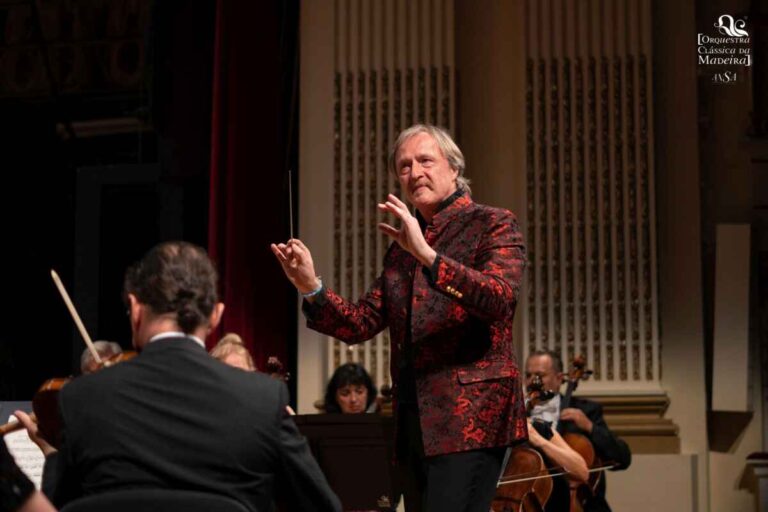
Born in Erlangen in 1965, Albrecht Mayer is not only the principal oboist of the Berlin Philharmonic but, as he told me in Funchal on April 14, 2023 also a passionate conductor since 2002.
On the island of Madeira, I had the chance to hear and see him in both positions, as oboist and as conductor of the Orquestra Clássica da Madeira (aka Madeira Classical Orchestra) at the Teatro Municipal Baltazar Dias in Funchal.
The theater was officially opened in 1888. It underwent several name changes. In 1935, it was named in honour of the blind playwright and poet Baltazar Dias, born on the island of Madeira at the end of the 16th century. The Teatro Municipal Baltazar Dias was modeled after the São Carlos Theatre in Lisbon and La Scala in Milan. Unfortunately, the elegant Funchal venue offers poor accoustics.
Luckily, from June 2023 onwards, within roughly three years, a brand new concert hall shall be built in the Funchal port area “which will provide the Region with a cultural facility for music, with adequate acoustic and scenic conditions”; the total cost is estimated at €19 million, including some €15 million coming from the European Union. Currently, the orchestra’s rehearsals take place at a building at Travessa das Capuchinhas with extremely poor accoustics. I am confident that, rehearsing and playing at an adequate venue, this motivated orchestra will be able to progress substantially.
Albrecht Mayer told me that he had proposed the April 15th program to the orchestra, presenting works by Haydn, Mozart and Beethoven, all from the First Viennese School (Wiener Klassik). Haydn was a friend and mentor of Mozart as well as a tutor of Beethoven. As for the Orquestra Clássica da Madeira, Albrecht Mayer told me that their strength lies in their high motivation, and that they all play on the more or less same level (kein Musiker fällt ab).
In Funchal since Tuesday, Albrecht Mayer taught a oboe master class to the orchestra’s oboists as well as the concert master’s daughter, Patrícia Khachkalyan Gomes, who is studying the instrument at the Royal College of Music in London.
Uniting 48 musicians in addition to Albrecht Mayer, with at least 43 playing according to the composition, the concert started with Joseph Haydn’s (1732 – 1809) Symphony No. 94 in G major, written in London in 1791 for the composer’s England concert series in 1791–1792. In the English speaking world, because of the many “jokes” integrated into the work, it was nicknamed “The Surprise”. In Germany, it is known as the symphony “with the kettledrum stroke” (Mit dem Paukenschlag), because of sudden fortissimo kettledrum stroke at the end of the otherwise calm second movement.
The first movement, Adagio cantabile – Vivace assai, offers a lyrical, calm introduction, with the orchestra under the direction of Albrecht Mayer quickly offering a celebrating, joyous, warm, dancing sound.
The second, “surprise” movement, with it’s Andante theme and variation began with the strings offering a more solemn sound, and the wind instruments later adding a dancing element. The surprise element comes not only from the above mentioned kettlredrum stroke, after which the music continues as if nothing had just happened, but also from the pianissimo repeat at the end of the first section with pizzicato play in the lower strings. In addition to four variations of the main theme, one could enjoy solos by oboe and flute.
The third movement, Menuetto: Allegro molto, did not strike me as extremely “allegro”. My impression was one of a warm, round, danceable sound which offered us an enjoyable time-travel to a court of the Ancien Régime.
The rhythmic, energetic fourth movement Finale: Allegro molto, written in sonata rondo form, convinced especially with joyous, colorful wind instruments inviting us to a party.
Overall, Haydn’s deliberately, seemingly simple but not simplistic Symphony No. 94 in G major was a warm up for both the orchestra and the public.
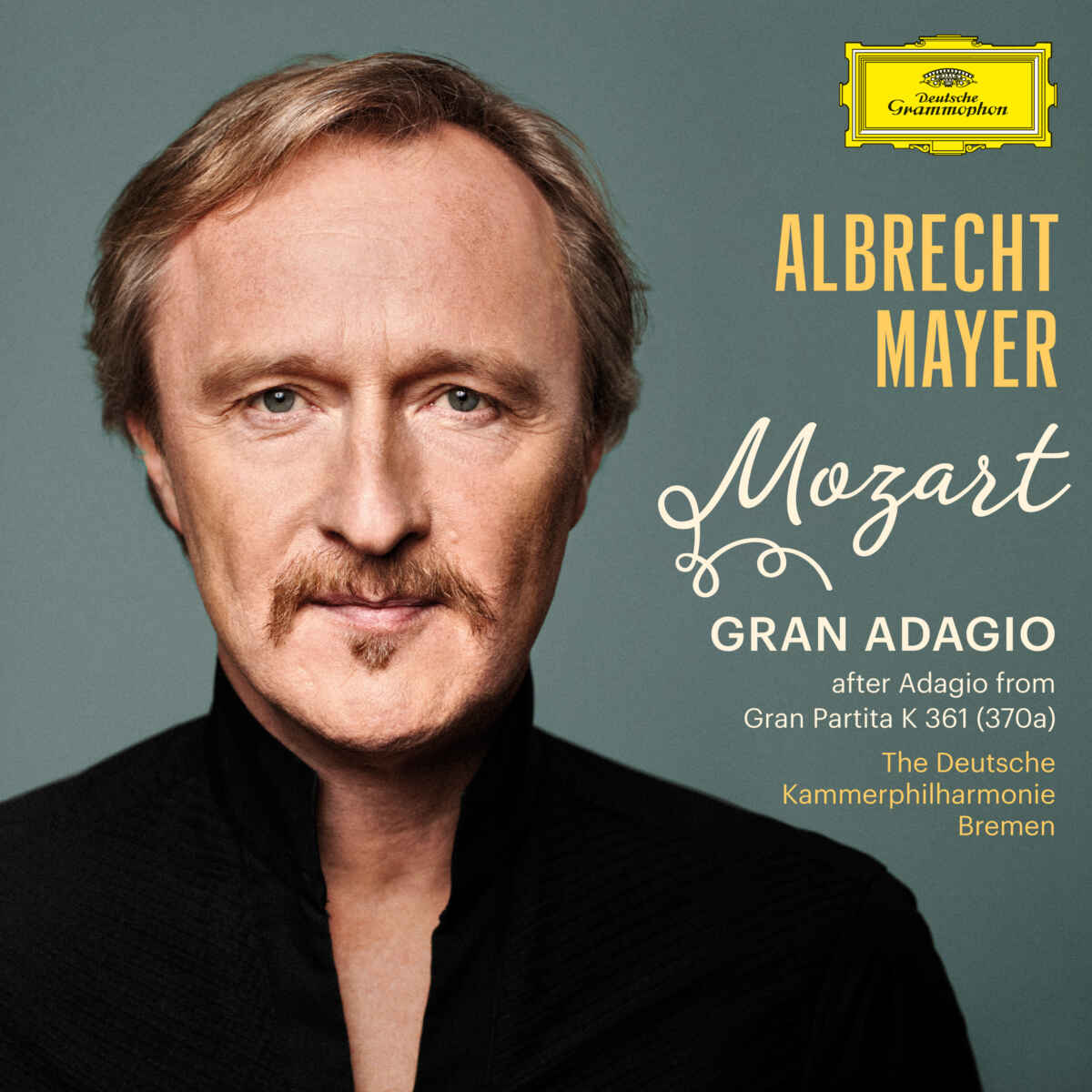
The second composition of the evening, Wolfgang Amadeus Mozart’s (1756 – 1791) Exsultate Jubilate (K. 165), in a transcription for oboe d’amore and orchestra, is “a kind of motet for soprano” (“eine Art Motete für Sopran“), as Albrecht Mayer had put it to me the day before.
He had recorded it on the 2021 Deutsche Grammophon album Albrecht Mayer: Mozart. Gran Adagio, together with the Deutsche Kammerphilharmonie Bremen. And later published it again with additional compositions by Mozart (order the enlarged, 2-CD deluxe edition from Amazon.com, Amazon.co.uk, Amazon.de, Amazon.fr; find Mozart sheet music in the USA at Sheetmusicplus).
At the Teatro Municipal Baltazar Dias in Funchal, the German oboist acted both as solist and conductor, mostly standing with the back to the orchestra, which still managed to play on a superior level than during the Haydn symphony.
Exsultate Jubilate for oboe d’amore and orchestra was transcribed by the German Matthias Spindler, with Albrecht Mayer playing the part originally written for the castrato Venanzio Rauzzini in 1773. In the Funchal concert program, there were only three (not four as with Mozart’s original composition) movements mentioned, entitled Allegro, Andante, Allegro.
The first section of Mozart’s motet, Allegro (Exsultate, jubilate), started with a firework of joy by both the oboist and the accompanying orchestra. Exsultate Jubilate was the highlight of the evening, offering harmonious interplay by the Orquestra Clássica da Madeira and its guest conductor and solist. After the calmer, fluid Andante (in the original: Tu virginum corona), ressembling the first movement’s central theme. According to Galaxy Music Notes, in the Andante, the music is directly modulated into Alleluia’s central subject, instead of taking the familiar course of the second recitative. Here, Mozart has pre-empted Beethoven, who is generally acclaimed as the first composer to link two concerto movements. Anyway, the execution in Funchal was excellent. The following Allegro (Alleluia), a rondo-finale, was marked by Albrecht Mayer’s bright, dancing oboe sound. The public rightly awarded the performance with a standing ovation.
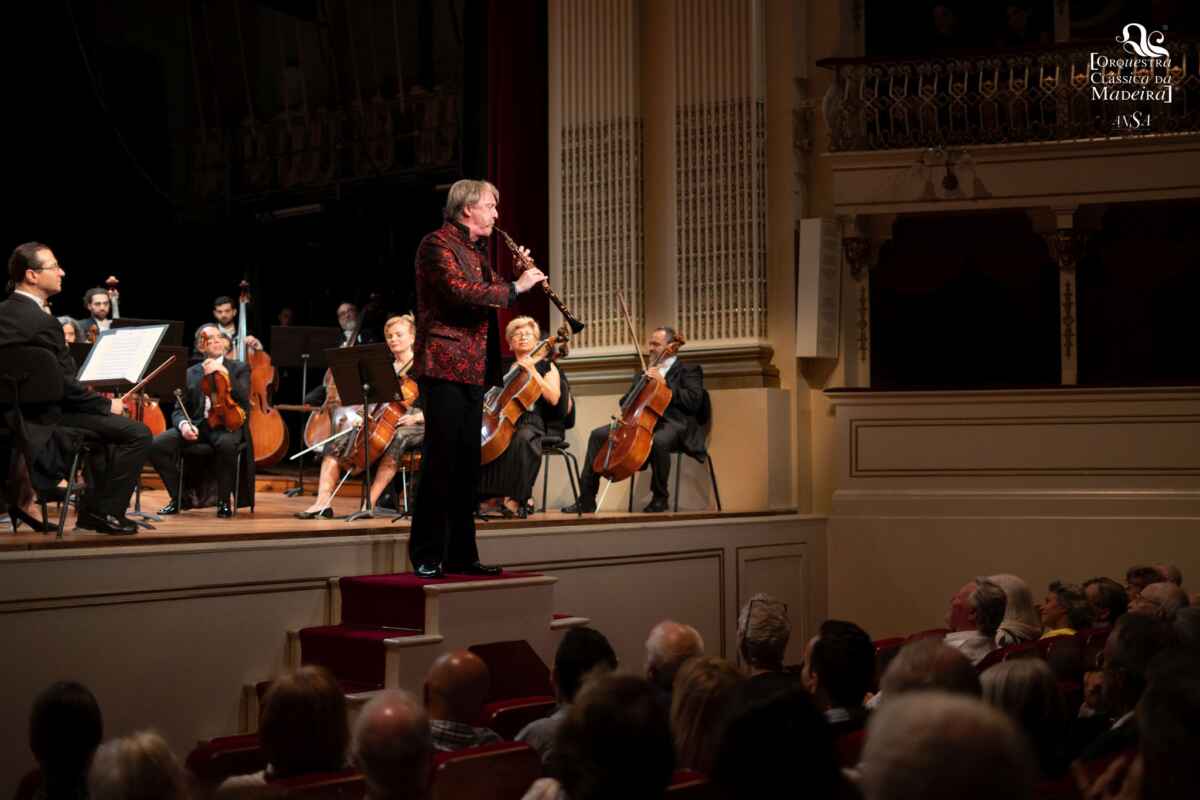
Albrecht Mayer playing the oboe in the second encore on April 15, 2023. Photo copyright: Mafalda Bompastor/Orquestra Clássica da Madeira.
Albrecht Mayer said at the Teatro Municipal Baltazar Dias, that this was his third stay on the island of Madeira, that he realized that the local Poncha is a drink without tangerine, and that he had found the answer to what saudade meant in music. Therefore, as an encore, he and the orchestra played Mozart’s Ave verum corpus, which can also be found on Albrecht Mayer’s 2021 Mozart album (Amazon.com, Amazon.co.uk, Amazon.de, Amazon.fr).
Afterwards, the oboist said he had always wondered what the stairs were for: either you come up or I come down. He added that he used the circular breathing technique — I play and breathe at the same time, which would lead the color of his face to change dramatically. Don’t try it at home, he stated (laughther). As a second encore, Albrecht Mayer played a short Bach cantata solo on the stairs leading up to the stage.
After the intermission followed the second highlight of the evening: Ludwig van Beethoven’s (1770 – 1827) Symphony No. 5 in C minor, Op. 67, written between 1804 and 1808. The first movement, the Allegro con brio, starts with the famous three Gs of equal duration followed by a sustained E-flat. According to Beethoven’s secretary Anton Schindler, this initial motif was a representation of Fate knocking at the door, hence the nickname “Fate Symphony” (Schicksalssinfonie). According to Jens Dufner from the Beethoven Archiv in Bonn, Anton Schindler was a dubious character. Only nine years after he had described his own emotions listening to the composition with the word “fate”, he added the quote according to which Beethoven himself had used that word.
Anyhow, from the three Gs and the sustained E-flat onwards, both the composition as well as the rendition by the Madeira Classical Orchestra were captivating. The Allegro con brio is written in the traditional sonata form, inherited from Haydn and Mozart. The ideas introduced in the first few pages undergo elaborate development through many keys, with a dramatic return to the opening section in the end. The rendition by Albrecht Mayer and the Orquestra Clássica da Madeira was not dark and heavy, although dramatic.

Albrecht Mayer and the Madeira Classical Orchestra on April 15, 2023. Photo copyright: Mafalda Bompastor/Orquestra Clássica da Madeira.
The second movement, Andante con moto, started with calmer strings, violas, cellos, double basses, soon joined by the concert flutes. Other uplifting wind instruments joined in. The composition is at times bombastic, with fortissimos and crescendos, but the rendition never lacked finesse.
The third movement, Scherzo. Allegro, begins slowly, but quickly becomes more powerful, notably with the wind instruments. The Madeira Classical Orchestra offered truly lively moments, with the scherzo offering stark constrasts. The composition’s inital motif returns and offers a brilliant transition to the fourth movement, which begins without a pause.
For the final Allegro, Ludwig van Beethoven chose C major and not C minor as in the first movement, as was traditionally expected. The movement offers ascending runs, and a breathing, final presto. And all of this composed by a man who was turning deaf. Albrecht Mayer and the Orquestra Clássica da Madeira played for people who could hear very well. And they were impressed by the rendition of Beethoven’s march which, after four attemps, led to a glorious final. A standing ovation followed.
Recent DNA analysis shows that there must have been an out-of-wedlock affair in Ludwig van Beethoven’s direct paternal line. The suspicion is that Beethoven’s father was the son of an affair of Ludwig’s grandmother with a man other than his grandfather. In other word’s, most likely, Beethoven was not a Beethoven, but a great composer nevertheless.
Beethoven Symphonie Nr. 5. in c / Symphony No. 5 in C minor. Bärenreiter Urtext, 1999, 125 pages. German full score / Partitur, Urtextausgabe. Order the sheet music from Amazon.com, Amazon.co.uk, Amazon.fr, Amazon.de.
Find Beethoven sheet music in the USA at Sheetmusicplus.
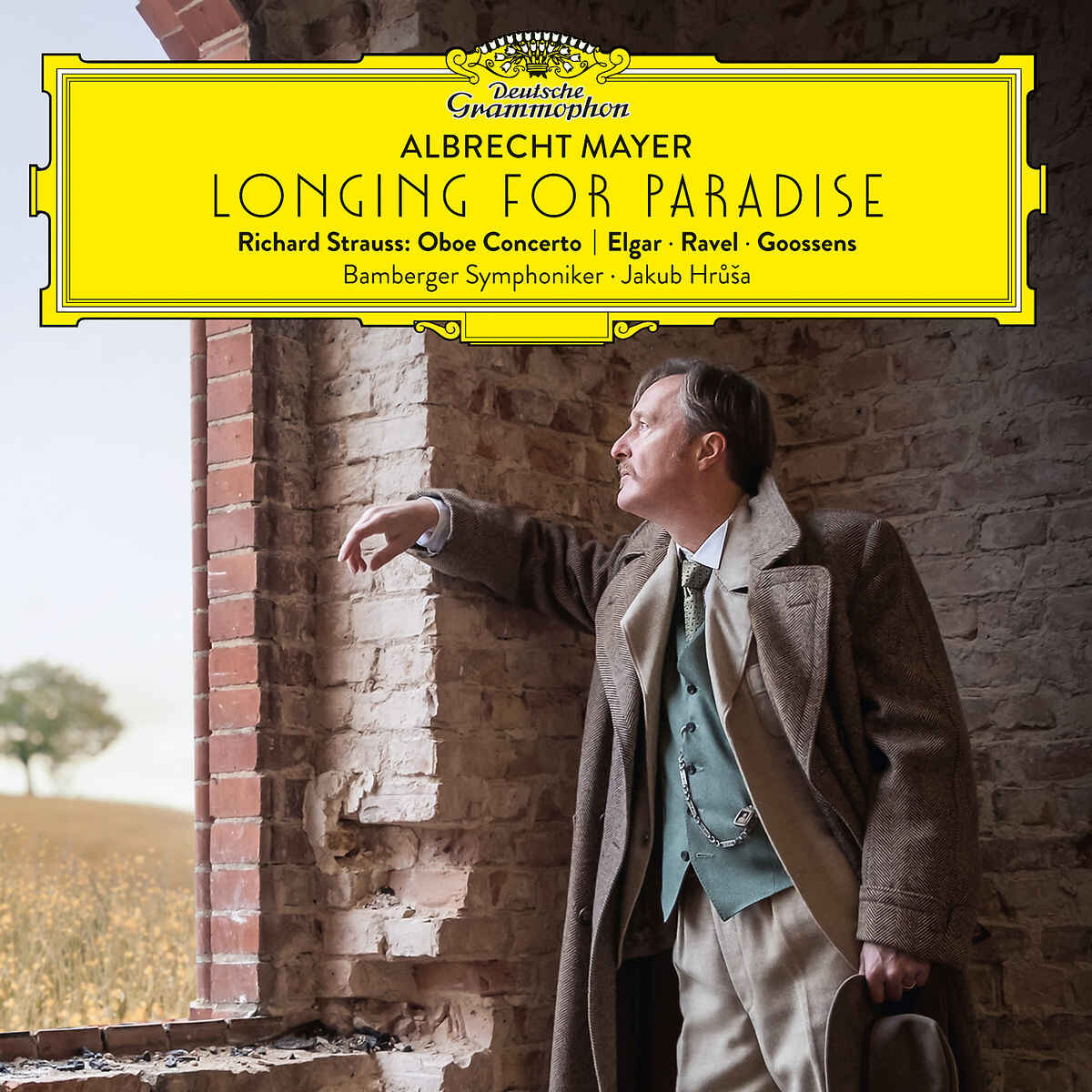
Albrecht Mayer, Bamberger Symphoniker: Longing for Paradise. Richard Strauss: Oboe Concerto; Elgar; Ravel; Goossens. Deutsche Grammophon, 2019. Order the Audio-CD and/or download the MP3 from Amazon.com, Amazon.co.uk, Amazon.de, Amazon.fr. Find Mozart sheet music in the USA at Sheetmusicplus.
A few final words about the oboist: Albrecht Mayer was born in Erlangen in 1965. As a boy, he sang in the famous boys choir of the Bamberg Cathedral. He told me on April 14, 2023 that his father was not only a pediatrician, but also a gifted classical pianist. When he and his brother entered the college-preparatory school in Bamberg (musisches Gymnasium, specialized in arts), the head of the school told Albrecht’s father that they needed oboists. Therefore, without being asked which instrument they prefered, in 1976, Albrecht and his brother learned to play the oboe. Albrecht was very gifted and, in 1990, became the principal oboist of the Bamberg Symphony Orchestra. In 1992, he took up the same position at the Berlin Philharmonic (Berliner Philharmoniker), one of the world’s leading symphony orchestra’s, second to none. Since then, he has worked with famous conductors such as Claudia Abbado (the most impressive, he told me), Simon Rattle, Kirill Petrenko, etc. As mentioned above, since 2002, he conducts himself. During his career, Albrecht Mayer has partnered with many musicians, including Hélène Grimaud, Leif Ove Andsnes, Lars Vogt, Thomas Quasthoff, Martin Grubinger and others.
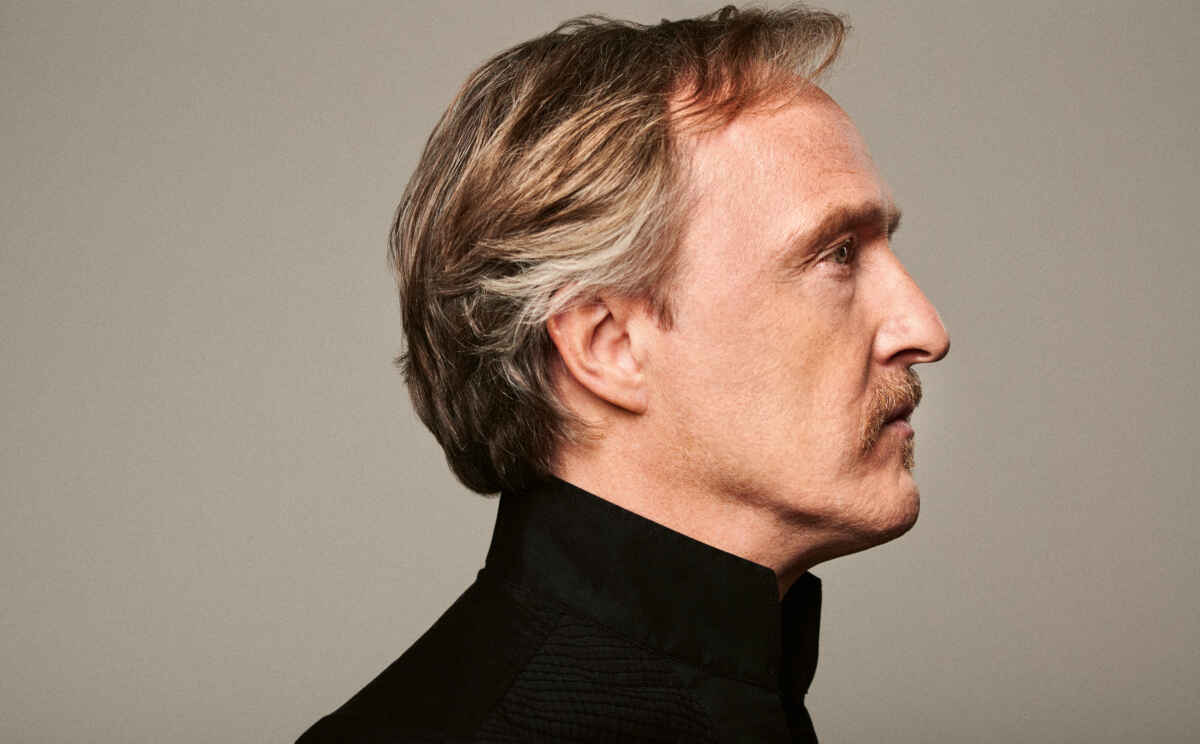
Albrecht Mayer. Photography copyright Christoph Köstlin / Deutsche Grammophon.

Albrecht Mayer. Photography copyright Christoph Köstlin / Deutsche Grammophon.
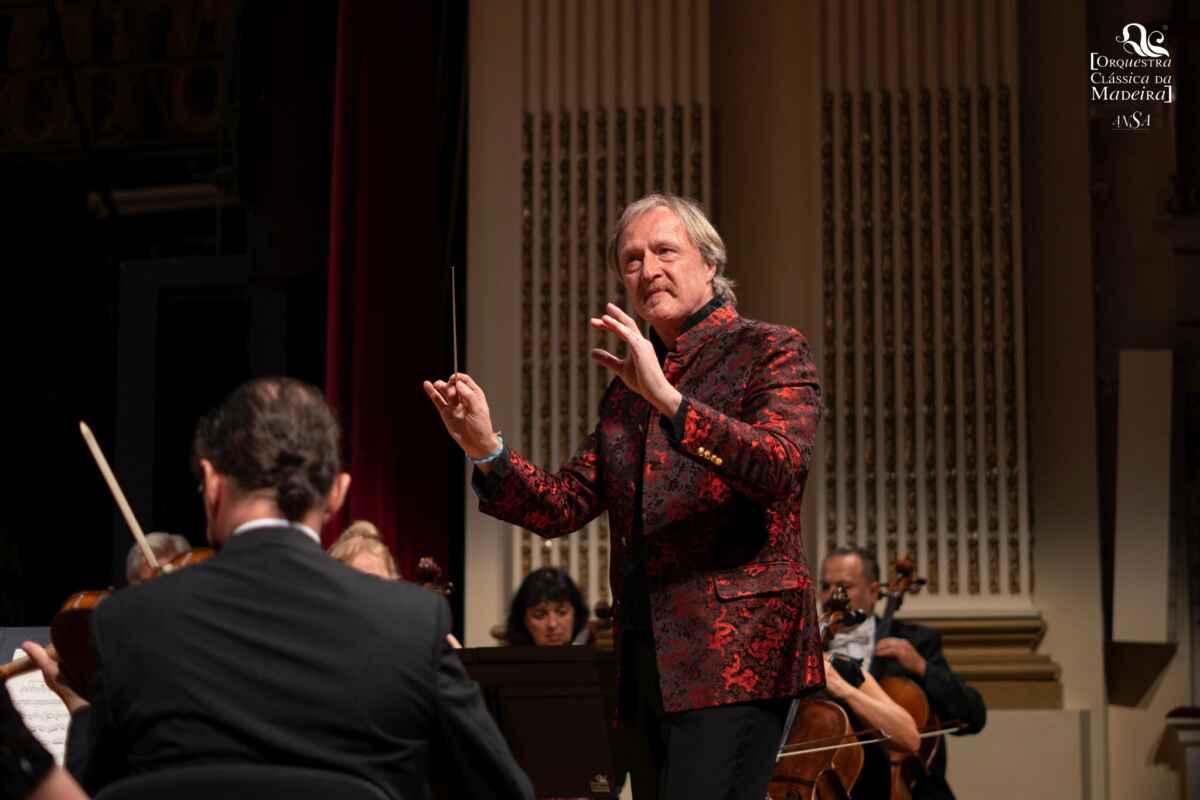
Albrecht Mayer conducting the Madeira Classical Orchestra on April 15, 2023. Photograph copyright: Mafalda Bompastor/Orquestra Clássica da Madeira.

The poster for the concert with Albrecht Mayer and the Orquestra Clássica da Madeira in Funchal on April 15, 2023.
Article added on April 17, 2023 at 11:18 Madeira time. Last detail added on April 29, 2023: the second encore was a Bach cantata (I still don’t know which one, he wrote so many).